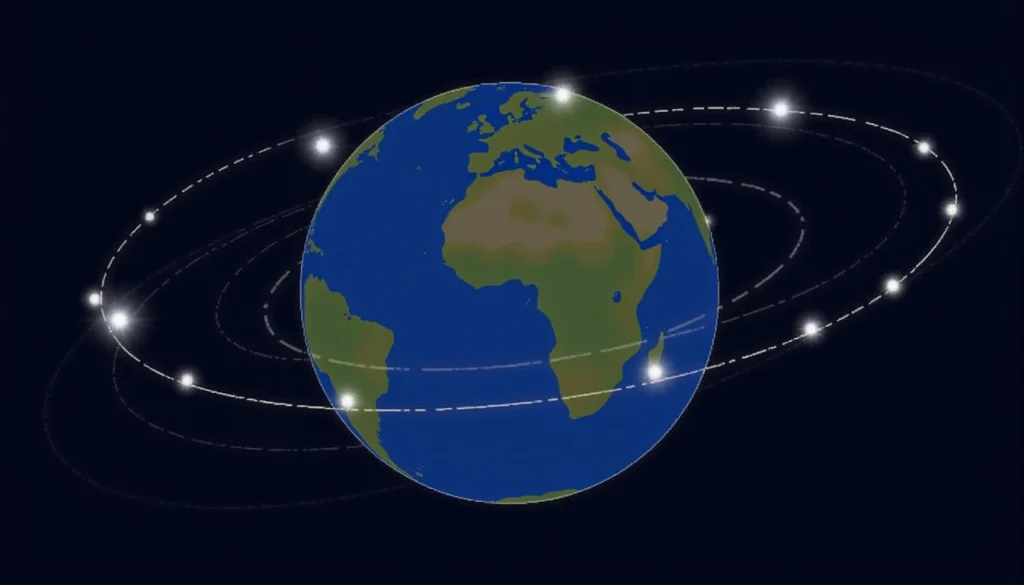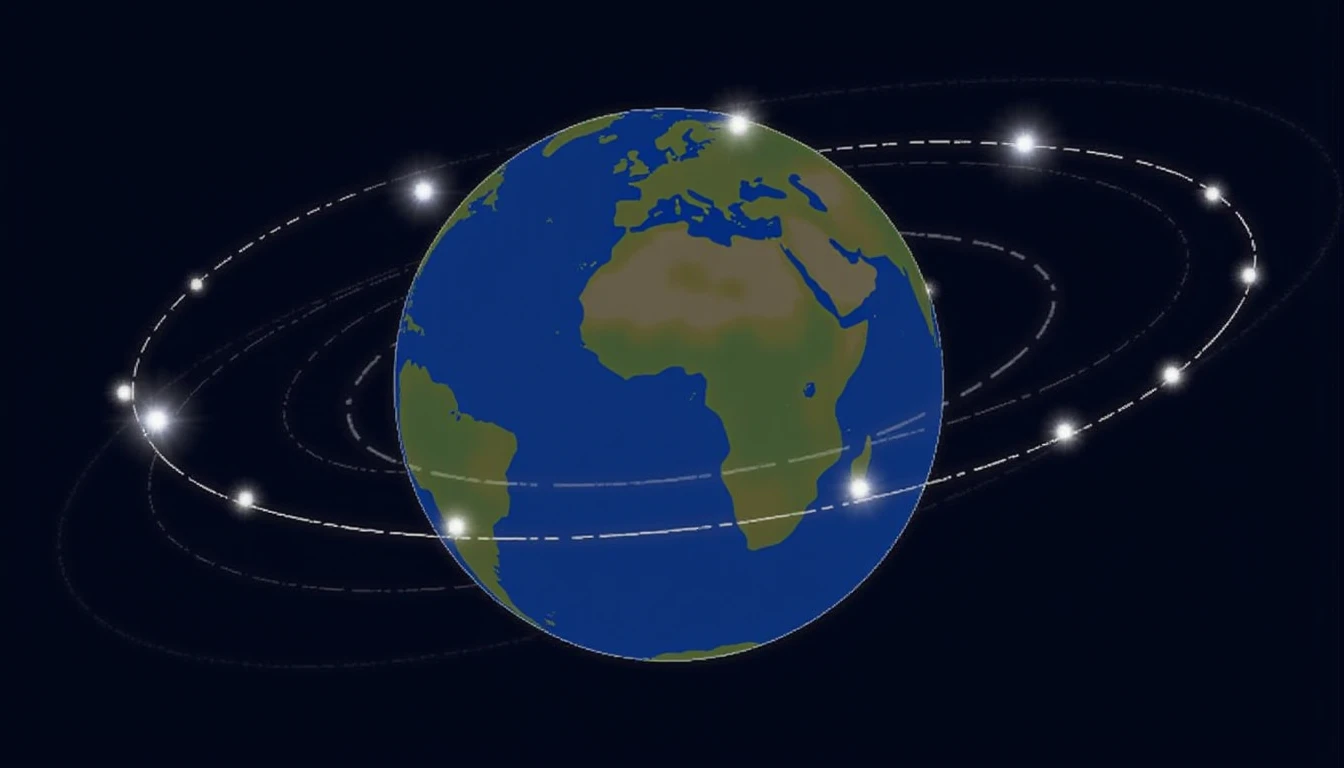The Impact of Satellite Constellation Expansion (e.g., Starlink) on GPS Accuracy
The Evolution of Satellite Constellations
The rapid deployment of satellite constellations by companies like SpaceX through initiatives such as Starlink has marked a significant shift in the space industry. These constellations are not merely an extension of traditional satellite networks but represent a new era of connectivity and precision. Historically, GPS systems relied on a limited number of satellites orbiting at a fixed altitude, which often led to gaps in coverage and reduced accuracy in certain geographical areas. The introduction of low Earth orbit (LEO) constellations has addressed these limitations by providing more frequent passes over the same area, enhancing signal availability.
Starlink, for instance, is designed with thousands of satellites positioned across multiple orbital planes at an altitude much lower than traditional GPS satellites. This proximity to Earth reduces latency and increases the frequency of data transmission between satellites and ground stations. The result is a denser network that can provide continuous coverage even in remote areas where conventional systems may falter. Moreover, the strategic placement ensures that signal strength remains robust, mitigating issues like multipath interference and blockages caused by natural or built environments.
The expansion of these constellations has not only improved accuracy but also opened up new possibilities for real-time data transmission. This is particularly beneficial in sectors requiring high-speed communication, such as disaster management and autonomous vehicle navigation. The enhanced signal density provided by LEO satellites allows for more precise triangulation, leading to sub-meter positioning capabilities that were previously unattainable with traditional GPS systems.
Enhanced Accuracy Through Increased Signal Density
The deployment of vast numbers of low Earth orbit (LEO) satellites is fundamentally altering the landscape of global positioning accuracy. Traditional GPS systems relied on a constellation of around thirty satellites, which could result in less precise measurements due to fewer points of reference at any given time. By contrast, satellite constellations like Starlink feature thousands of satellites, significantly increasing the number of signal paths available for triangulation.
This higher density of signals translates into more accurate position fixes, especially in challenging environments where buildings or terrain can obstruct satellite lines of sight. The additional satellites ensure that even if some signals are blocked or weakened by obstructions, there are enough alternative pathways to maintain reliable and precise location data. Furthermore, the lower altitude at which these LEO satellites orbit means they transmit signals over shorter distances, reducing attenuation and improving signal integrity.
The enhanced accuracy provided by these systems is particularly advantageous for applications that require high precision, such as surveying, agriculture, and construction. For instance, farmers can now utilize more accurate geolocation data to optimize crop yields through precise irrigation and fertilization practices. Similarly, in urban planning and civil engineering projects, the increased reliability of positioning information allows for more efficient site management and safer infrastructure development.

Innovations in Satellite Design and Technology
The advancements in satellite design have been instrumental in the success of constellations like Starlink, leading to significant improvements in GPS accuracy. Modern satellites are equipped with cutting-edge technology that ensures robust performance even under adverse conditions. For example, many LEO satellites are now fitted with phased array antennas, which allow for dynamic beamforming and reconfiguration. This capability enables satellites to focus their signals more precisely on specific geographic areas, further enhancing the strength and clarity of the GPS signal.
In addition to improved antenna technology, advancements in onboard processing power have allowed these satellites to handle complex computations closer to the source of data generation. By performing calculations onboard rather than transmitting raw data back to Earth for processing, delays are minimized, contributing to more immediate and accurate position fixes. This is particularly beneficial for real-time applications such as autonomous vehicles or drones that require instantaneous location updates.
Another key innovation lies in the use of multi-spectral communication systems on these satellites. These systems enable simultaneous transmission over multiple frequency bands, increasing redundancy and improving resilience against interference. For instance, some constellations incorporate both Ka-band and Ku-band frequencies, providing a more robust network capable of handling higher data loads and maintaining reliable connections even when faced with environmental challenges.
Mitigating Interference and Enhancing Security
Despite the numerous benefits brought by satellite constellations like Starlink, there are significant challenges related to signal interference and security that must be addressed. One major concern is the potential for increased electromagnetic interference due to the high density of satellites orbiting at low altitudes. The proximity of these satellites can lead to cross-link interference if not properly managed, potentially degrading GPS accuracy.
To mitigate this issue, satellite operators are implementing sophisticated frequency management systems and employing advanced signal processing techniques. These measures ensure that each satellite operates on a unique subset of the available spectrum, minimizing overlap and reducing interference risks. Additionally, adaptive filtering algorithms can dynamically adjust to variations in signal strength, helping maintain optimal performance even under fluctuating conditions.
Security is another critical aspect as these systems become more integrated into everyday life. The increased reliance on accurate location data for applications ranging from personal navigation to national defense necessitates robust cybersecurity measures. Encryption protocols and secure authentication methods are being developed specifically for satellite communications to safeguard against unauthorized access or manipulation of the GPS signal. Furthermore, advancements in quantum cryptography offer promising solutions for future-proofing these systems against emerging threats.
Future Prospects and Applications
The ongoing expansion of satellite constellations is poised to revolutionize not only GPS accuracy but also a wide range of applications across various industries. In transportation, the enhanced precision provided by LEO satellites will facilitate safer and more efficient autonomous vehicle operations. Real-time traffic monitoring systems can benefit from continuous and accurate geolocation data, enabling smarter route planning that reduces congestion and improves fuel efficiency.
In maritime navigation, these advancements could lead to significant improvements in vessel tracking and collision avoidance. The increased coverage of satellite constellations allows for more reliable communication links between vessels and shore-based infrastructure, enhancing situational awareness at sea. Similarly, aviation will see benefits through better precision approaches during landings, particularly in regions with challenging weather conditions or limited ground-based navigation aids.
Beyond transportation, the improved accuracy offered by these systems has far-reaching implications for disaster response efforts. Search-and-rescue operations can leverage more precise location data to pinpoint survivors accurately, while emergency services can deploy resources more effectively based on real-time updates from affected areas. Additionally, environmental monitoring programs will gain valuable insights through enhanced tracking capabilities, aiding in conservation efforts and climate change mitigation strategies.

